Speakers
Eshraq Al-Dmour

Eshraq Al-Dmour is the Deputy Director of the Accelerator Division at MAX IV Laboratory in Sweden. She holds an M.Sc. in Synchrotron Radiation and Particle Accelerators from the Autonomous University of Barcelona and brings over 20 years of expertise in accelerator technology, vacuum systems, and large-scale scientific infrastructure. At MAX IV, she leads the strategic upgrade of the storage ring and manages the accelerator program portfolio. Her previous leadership roles include Head of Engineering at MAX IV and Vacuum Section Head at ALBA-Barcelona, where she contributed to the design, commissioning, and optimization of complex accelerator systems. Eshraq actively engages in the global accelerator community, serving on advisory committees for major projects such as PETRA IV, Diamond II, and SOLEIL II.
Maud Baylac

Maud BAYLAC obtained a PhD in 2000 for the first Compton-based polarization measurement of the CEBAF electron beam at Jefferson Laboratory. She then worked at Jefferson Laboratory (USA) on polarized photo-guns. In 2005, she joined CNRS at the Laboratory of Physics and Cosmology in Grenoble (France), as the head of the accelerators division until 2022. She worked on beam dynamics for the LINAC4 injector for LHC and in the field of accelerator-driven systems where she led the development of the accelerator for the GUINEVERE model, operated at the nuclear site of SCK-CEN in Belgium. She was the program manager for accelerators of CNRS/IN2P3. Since 2021, she joined the energy recovery linac project PERLE, where she is in charge of the photogun. She is the director of the French accelerator network SCIPAC and is a member of the coordination panel of the european project iSAS.
Christian Boffo
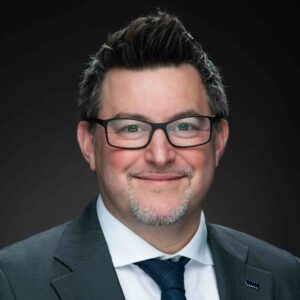
As project director for the Proton Improvement Plan II, PIP-II, Cristian Boffo is leading the construction of a 215-meter-long superconducting linear accelerator and the upgrades to Fermilab’s existing accelerator complex. Boffo began his career as a member of Fermilab’s Linear Accelerator group after earning a master’s degree in mechanical engineering in 1999. He later moved to Europe, where he worked in industry as a project manager and business developer for superconducting systems. In 2019, he returned to Fermilab, taking on multiple roles within the PIP-II team. Throughout his career, Boffo has remained deeply involved in advancing superconducting magnet systems.
Rama Calaga

Dr. Rama Calaga received his PhD in Accelerator Physics from Stony Brook University, New York in 2006. He started working on superconducting RF cavities for energy recovery linacsin 2003, and since 2006 on the use of superconducting crab cavities for the LHC luminosity upgrade. He is the work package leader of the crab cavity project at CERN which is expected to become operational for first proton collisions in 2030.
Iryna Chaikovska

Iryna Chaikovska is a physicist at IJCLab/CNRS in Orsay, France. Her work focuses on high-intensity positron sources and accelerator-based Compton X-ray facilities. She received her PhD in 2012 from Université Paris-Sud XI (now Université Paris-Saclay), with a thesis on polarized positron sources for future linear colliders. Since then, she has been heavily involved in the design, simulation and optimisation of positron sources for both existing and future collider projects, and since 2015 she has led the positron source activities at IJCLab. Iryna has been working on the ThomX compact Compton X-ray source since 2014. She is particularly involved in storage ring beam dynamics, beam diagnostics and high-level application tools for ThomX commissioning and operation, with the goal of improving the stability and performance of the produced X-rays.
Mary Convery
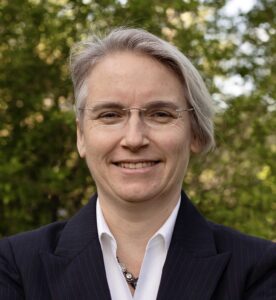
Mary Convery is the director of the Beams Division at Fermilab, focusing on operations planning and performance of the accelerator complex. She is also the deputy project director for facilities for the LBNF/DUNE-US project. In this role she oversees the design and construction of the conventional facilities and beamline at Fermilab. She has a PhD in high-energy physics from Case Western Reserve University.
Brigitte Cros

Brigitte Cros is a CNRS research director based at the Laboratoire de Physique des Gaz et des Plasmas in Orsay (France). She is a plasma physicist with a PhD in Physics from Université Paris Sud 11 (now Université Paris Saclay), specialized in plasma wakefield acceleration. She has pioneered laser driven wakefield demonstration in capillary waveguides, and is currently involved in the optimization of electron sources driven by laser in plasma cells for use in multi-stage schemes. She contributes to the EuPRAXIA project, aiming to build a plasma-based accelerator facility. She is a member of the ICFA Advanced and Novel Accelerator panel promoting the development of high energy accelerator studies such as ALEGRO and more recently the 10 TeV Design study initiative.
Michael Ehrlichman
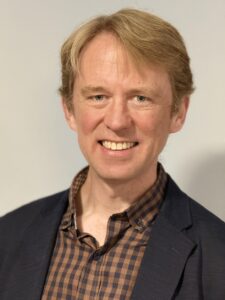
Michael Ehrlichman received his PhD from Cornell University for his dissertation on Intrabeam Scattering experiments in the Cornell Electron Storage Ring and Touschek Scattering studies for the Energy Recovery Linac. He completed his postdoc at the Paul Scherrer Institute optimizing nonlinear optics for early prototypes of the Swiss Light Source 2.0 upgrade. Later at Lawrence Berkeley National Laboratory he developed a new injection scheme for the ALS-U Accumulator Ring. Michael is currently at SLAC National Accelerator Laboratory in the Accelerator Research Division where he develops the modeling ecosystem for the Linac Coherent Light Source and works on forward-looking concepts for the next generation of particle accelerators.
Robin Ferdinand
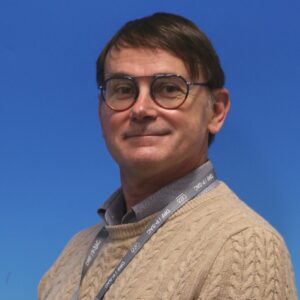
Robin Ferdinand began his career in 1991 as a young physicist at the Laboratoire National Saturne in Saclay, France, a 3 GeV synchrotron. He then contributed to several international high-power accelerator projects, such as IPHI, IFMIF, ESS, and CONCERT. In 2005, he joined the GANIL laboratory in Normandy to participate in the SPIRAL2 project. He was coordinator of the superconducting linac from 2007 to 2012 during its construction phase, then responsible for commissioning before becoming the final project leader until SPIRAL2 went into operation in early 2022. He then became project manager for a compact neutron source in Saclay. He is now back at GANIL, where he continues his work in the field of accelerators.
Adrian Hillier

Adrian Hiller is the muon group leader at the ISIS Neutron and Muon Facility, STFC Rutherford Appleton Laboratory, UK, with ~250 publications. In the early part of his career, his research was focused on magnetism and superconductivity. Recently, he initiated and leads the development of the technique using negative muons for elemental analysis. This development has been utilised by a wide scientific community, from energy materials to advanced engineering to cultural heritage. Non-destructive depth-dependent elemental analysis, along with the sensitivity for all elements, is unique and increases our understanding of these materials.
Eito Iwai

Eito Iwai is a Principal Researcher in the Accelerator Division at the Japan Synchrotron Radiation Research Institute (JASRI), the host institute for the SPring-8 synchrotron radiation facility. He received his Ph.D. in Science from Osaka University in 2012, where he worked on the Kaon rare decay experiment, KOTO. Dr. Iwai began his career focusing on Particle Experimental Physics, working as a researcher on Neutrino physics at the High Energy Accelerator Research Organization (KEK) from 2013 to 2016, followed by a Research Fellowship at the University of Michigan in the United States. Since 2018, he has shifted his expertise to Accelerator Physics, joining the RIKEN SPring-8 Center, and later assuming his current role at JASRI in 2022. His current research concentrates on advanced RF systems and the application of Machine Learning techniques for accelerator control and diagnostics, contributing to the development and operation of high-performance light sources. His contributions have been recognized with the 20th Particle Accelerator Society of Japan (PASJ) Award for Technical Contribution.
Seongyeol Kim
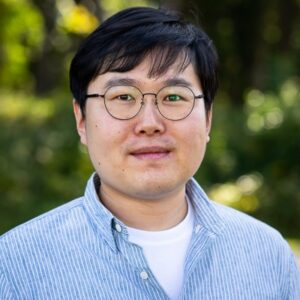
Seongyeol Kim earned a PhD in Physics from the Ulsan National Institute of Science and Technology (UNIST) in August 2021, with a thesis on electron beam manipulation for the beam-driven plasma wakefield accelerators. Then, he joined the Argonne Wakefield Accelerator Group (AWA) at Argonne National Laboratory as a postdoc. His work focused on the control and manipulation of electron beam phase spaces for high-gradient, high-efficiency advanced accelerators. In addition, he participated in several collaborative projects such as AI/ML-based phase space reconstruction with SLAC, bunch shaping using a multi-leaf collimator and emittance exchange beamline with UCLA, and X-band transverse deflecting cavity-based longitudinal bunch shaping with Euclid Techlabs. Since September 2023, he has been working as a staff scientist at the Pohang Accelerator Laboratory X-ray Free Electron Laser (PAL-XFEL) facility. His current work involves studying the electron beam dynamics for high-brightness XFEL and operating the machine for user services. His research interests include novel beam diagnostics and optimization of the beam and FEL using artificial-intelligence, machine-learning (AI/ML) techniques.
Aaron Rafael Liberman

Aaron Liberman is pursuing his PhD in laser-wakefield acceleration under the supervision of Prof. Victor Malka at the Weizmann Institute of Science. His research focuses on manipulating a laser’s spacetime structure to overcome the dephasing limit and achieve higher electron energies. Aaron’s research has featured in several peer-reviewed journals, has been solicited at leading conferences, and has been presented at invited seminar talks. His IMPALA spatio-spectral laser diagnostic was named one of the optics breakthroughs of 2024 by Optics and Photonics News. Aaron received a 2025 SPIE Optics and Photonics Scholarship, the Best Student Paper Award at the 2025 SPIE Optics and Optoelectronics Conference, and the Weizmann AMOS Best Talk Award. Prior to Weizmann, Aaron earned his BA in Physics and Mathematics, magna cum laude, from Columbia University, where he was inducted into the Phi Beta Kappa honor society and received Columbia’s Leadership and Excellence Award among other awards and fellowship.
Frank Ludwig
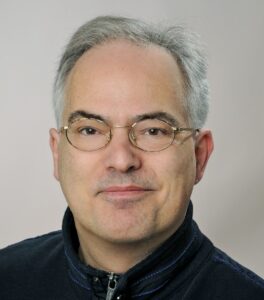
Frank Ludwig holds a PhD in physics from the University of Hamburg, Germany for the nonlinear dynamics and far-infrared broadband spectroscopy of high-temperature superconductor Josephson junctions for the TESLA Test Facility Linac at DESY in 2003. He held a post-doctoral position in the linear accelerator research group at DESY under Prof. P .Schmüser for the development of multi-channel cavity field detectors and beam diagnostics with sub-10fs resolution. At MIT Optics and Quantum Electronics group under the direction of Prof. F. X. Kärtner he contributed to the laser to rf-conversion using the Sagnac interferometer method. Since 2006 as a scientific research member in the Machine Controls Group (MSK) at DESY he developed the key systems for a short and long-term stable machine operation at FLASH and XFEL on the fs-scale, especially for the Low-Level-Radio-Frequency (LLRF) system, high frequency distribution system and optical synchronization system, continuously. From 2010 as a deputy of the MSK group at DESY headed by Dr. H. Schlarb, he made the LLRF system with less than 10fs resolution based on the MicroTCA.4 standard available for the entire accelerator community.
Agostino Marinelli

Agostino Marinelli is an assistant professor of Photon Science and Particle Physics and Astrophysics at Stanford University and the SLAC National Accelerator Laboratory. He received his PhD in physics from the University of California, Los Angeles in 2012 and has been at SLAC ever since. Prof. Marinelli leads the X-ray free-electron laser R&D program at the Linac Coherent Light Source. His research interests lie in the physics of x-ray free-electron lasers and their application to ultrafast science. He is a fellow of the American Physical society and the recipient of the Kai Siegbahn prize and the IEEE Particle Accelerato Sciece and Technology Award.
Natalia Milas
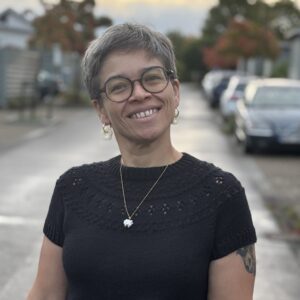
Natalia Milas did her PhD in accelerator physics at the Brazilian Light Source on longitudinal dynamics and instabilities. After the PhD, she worked at RHIC and PSI on various topics, like beam dynamics, diagnostics, feedback and lattice design. Since 2017 she has been working at ESS in the Beam Physics group and is heavily involved in the commissioning of the ESS linac. She is the work package leader of the Proton Complex in the Muon Collider Project and is also taking part in the ESS neutrino project.
Michiko Minty

Michiko Minty is head of the Accelerator Operations and Research Division in BNL’s Collider-Accelerator Department. After graduation, she held postdoc positions at the University of Michigan and SLAC, then joined SLAC as a staff physicist on the SLC. She also worked on the ATF at KEK and the SLAC B-Factory. At DESY, she led the DESY-II lepton and DESY-III proton synchrotrons and contributed to R&D at the TESLA Test Facility, the foundation for the European XFEL, as well as to the HERA electron–ion collider. She has twice been elected to the APS DPB chair line, serving as chair in 2019, and is a frequent USPAS lecturer, receiving the USPAS Teaching Award in 2023. Michiko’s career has centered on particle colliders—the SLC, PEP-II, HERA, and RHIC—as reflected in the textbook Measurement and Control of Charged Particle Beams, co-authored with Frank Zimmermann (CERN).
Masashi Otani

Masashi Otani is an Associate Professor at the High Energy Accelerator Research Organization (KEK) in Japan. He received his Ph.D. in Physics from Kyoto University, where he worked on the long-baseline neutrino experiment T2K. He then gained further experience in underground neutrino experiments at the Research Center for Neutrino Science, Tohoku University. Since 2013, he has been conducting research at KEK on muon acceleration and its applications, and since 2017 he has also been involved in studies using the high-intensity proton accelerator complex at J-PARC. He currently leads the development of the world’s first muon linear accelerator for the J-PARC Muon g-2/EDM experiment.
Alex Picksley
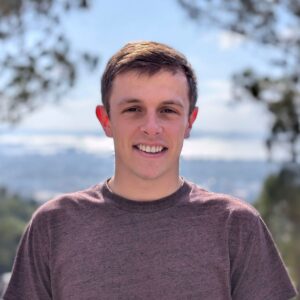
Alex Picksley is a Research Scientist at the BELLA Center, at Lawrence Berkeley National Lab in California. He joined as a Postdoctoral Researcher in 2021, and focuses his research on the development of high-energy, high-quality laser plasma acceleration of electrons. He completed his PhD thesis on plasma channels for laser-plasma accelerators at the University of Oxford in 2021, for which he was awarded the UK’s Institute of Physics Culham Thesis Prize. In 2025, he was awarded the Simon van der Meer Early Career Award in Novel Accelerators which recognizes outstanding early career contributions in novel accelerator techniques.
Patrick Rauer
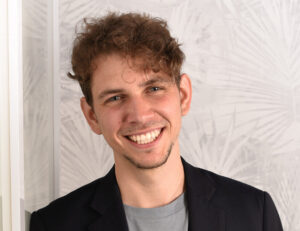
Patrick Rauer received his PhD in Physics from the University of Hamburg for his dissertation on a cavity-based X-ray free-electron laser (CBXFEL) demonstrator. He began his career as a research associate at the University of Hamburg, working on the LoKoFEL(longitudinal coherence in FELs) project, before joining the European XFEL to focus on simulations for the CBXFEL demonstrator. In 2021, Dr. Rauer moved to DESY as a postdoctoral researcher, where he co-led the CBXFEL demonstrator project that achieved the world’s first lasing from a CBXFEL. Since May 2025, he has been a tenure-track scientist at DESY, where he leads the efforts for cavity-based X-ray FELs at the European XFEL.
Stéphane Sanfilippo
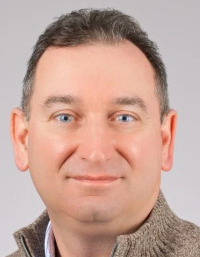
Dr. Stéphane Sanfilippo holds a Ph.D. in Physics from the University of Grenoble in 1997, where he specialized in high-temperature superconductivity. He began his career at CERN, contributing during 10 years to the magnetic testing, and performance qualification at cryogenic temperatures of the Large Hadron Collider superconducting magnets, focusing on data analysis, field quality, and performance assessment. Since 2008, Dr. Sanfilippo is Head of the Magnet Section at the Paul Scherrer Institute (PSI), Switzerland, leading the development of resistive, permanent, and superconducting magnets for major facilities such as the Swiss Light Source upgrade (SLS 2.0), Swiss Free Electron Laser (SwissFEL), and the beam lines of the Isotope and Muon Production using Advanced Cyclotron and Target technologies project (IMPACT). His expertise covers superconductivity, accelerator magnet technologies, magnetic measurements, and the design of precision measurement systems. He is a member of international committees on superconducting magnet design and magnetic measurements.
Ulrich Schramm
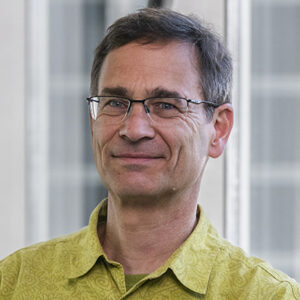
Prof. Ulrich Schramm’s research focuses on the manipulation and control of particle beams with laser light, starting in the early 1990s with laser cooling of stored ion beams in Heidelberg and Munich. With the advent of CPA TW lasers his interest shifted to the new field of laser plasma accelerators. Since 2011 he is director of the Institute of Radiation Physics at HZDR Dresden, operating the center for high power radiation sources which includes two Petawatt laser systems. With the Dresden team he performed benchmarking experiments towards application readiness of plasma accelerators, comprising the dose-controlled proton irradiation of tumors, the efficient generation of proton energies beyond 100 MeV in near critical density targets, and the demonstration of seeded FEL gain with laser wakefield accelerated electrons bunches. In 2024 this work was awarded with the first ICUIL Yoshiaki Kato prize.
Mike Seidel
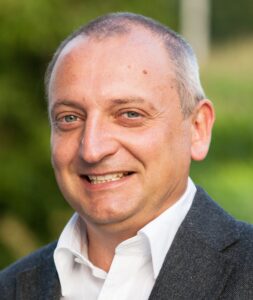
Mike Seidel is specialised in particle accelerators and received his PhD 1995 from the University of Hamburg. As a postdoctoral researcher he joined the Stanford Linear Accelerator Center, and worked subsequently at DESY/Hamburg, focusing on the particle physics collider HERA. In 2006 he moved to the Paul Scherrer Institute (PSI), where he was in charge of the High Intensity Proton Accelerator (HIPA) and the PROSCAN proton therapy facility. In 2020 he became the division head for Large Research Facilities at PSI, he joined the PSI board of directors and was appointed a full professor at the École Polytechnique Fédérale de Lausanne (EPFL), where he leads the Particle Accelerator Physics Laboratory (LPAP). Mike Seidel’s research includes studies for future particle colliders and on energy efficiency of particle accelerators. He has been a member and chair of the CERN Machine Advisory Committee (CMAC) 2016-24. The Large Laboratory Directors Group (LDG) is chaired by him since 2025, with the European Accelerator R&D Road Map activities being overseen.
Yoshihiro Shobuda
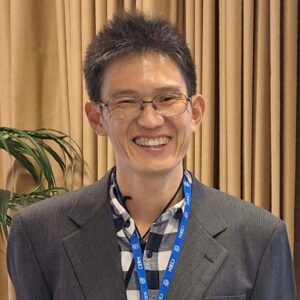
Dr. Yoshihiro Shobuda received his Ph.D. from Tohoku University in 1999 and became a Center of Excellence Researcher at Hiroshima University, where he studied radiative laser cooling in an electron storage ring. From 2000 to 2003, he served as a Postdoctoral Fellow at KEK, conducting theoretical studies on hadron-beam crystallization, tune shifts of relativistic beams arising from resistive chambers with asymmetric cross-sections, and beam dynamics in the Energy Recovery Linac. In 2003, he joined the J-PARC project at the Japan Atomic Energy Agency and was promoted to Senior Researcher in 2017. He is currently a member of the Beam Commissioning Group for the 3 GeV Rapid Cycling Synchrotron at J-PARC, responsible for achieving high-intensity proton beams through the study of beam impedance and the suppression of beam instabilities. Since 2018, he has served as a member of the ICFA Beam Dynamics Panel.
Haik Simon
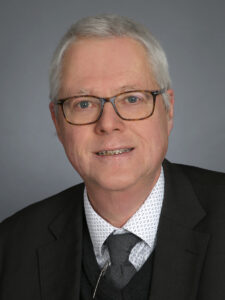
Haik Simon holds since 1998 a PHD in nuclear physics with exotic nuclei from the Darmstadt University of Technology. He spent some time at the ISOLDE facility at CERN in Geneva where he also got involved in setting up the REX-ISOLDE facility. He also worked as PI on designing an electron ion scattering facility for the storage ring at the FAIR facility in Darmstadt, Germany . Since 2011 he’s Deputy Department Head of the Research Division Nuclear Reactions at GSI Darmstadt and deeply involved in physics around the R³B reaction setup GSI on its transition to FAIR. Since 2012 he worked in different positions on the design, production and installation of a new generation In-flight separator, named Super-FRS, which makes best use of superconducting magnet technology in order to produce secondary beams at relativistic velocities for a wide range of applications. Since 2016 he’s heading the Super-FRS Sub-Project division.
Igor Syratchev
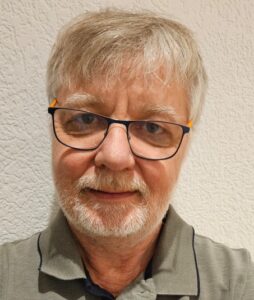
Igor Syratchev graduated from Novosibirsk Electrotechnical Institute in 1986. From 1986 to 1998 he was working in BINP, Protvino for linear colliders projects VLEPP and JLC/NLC. In 1994 he received European Accelerator prize for his work in demonstrating efficient RF pulse compression. Igor got his PhD in accelerator physics at BINP in 1997. In 1998 he joined the CLIC study at CERN. He developed, built and successfully tested RF power extraction and transfer structures (PETS) – one of the important components of the CLIC two-beam accelerator. Igor areas of expertise are RF systems and RF power sources for accelerators. Currently Igor oversees CERN’s High Efficiency RF power sources projects for various large-scale accelerator (CLIC, FCC, ILC and MuC).
Jingyu Tang
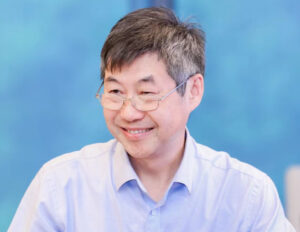
Professor at University of Science and Technology of China (USTC) since 2022, he graduated from USTC with Bachelor in 1984, and from Institute of Modern Physics (IMP, CAS) with PhD in 1990. From 1993 to 2004, he worked at IMP, and from 2004 to 2022 at Institute of High Energy Physics (IHEP, CAS). He has also about eight-year experience in several European laboratories such as GANIL (Caen, France), CAL-MEDICYC (Nice, France) and FZJ (Juelich, Germany). His main interests are accelerator physics and technology, and particle beam applications. He played key roles in facilities and projects including Heavy-Ion Research Facility at Lanzhou, China Spallation Neutron Source (CSNS), China Accelerator-Driven System and Super Proton-Proton Collider (second phase of CEPC-SPPC). He initiated and promoted the projects like the Back-n white neutron source and the EMuS muon source at CSNS. Currently he is one of the leading persons in the Super Tau-Charm Facility (STCF, an electron-positron collider under R&D) project.
Mark Thomson
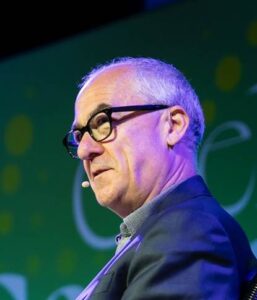
Since January 2026, Mark Thomson has been the Director-General of CERN. Previously, from 2018-2025 he was the Executive Chair of the UK Science and Technology Facilities Council (STFC), responsible for UK funding of particle physics, astrophysics and nuclear physics, as well as operating world-leading research infrastructure at Rutherford Appleton and Daresbury Laboratories. Prior to this, his research career spanned, electroweak physics at CERN’s Large Electron Positron Collider, neutrino physics at Fermilab in the US, and the development of Particle Flow Calorimetry both for future colliders and Liquid Argon TPC neutrino detectors. Most recently, 2015-2018, he was co-spokesperson of the Deep Underground Neutrino Experiment (DUNE). In 2013 he published “Modern Particle Physics” a textbook aimed at final-year undergraduate students and first-year graduate students, which has been widely adopted across the globe.
Laura Torino
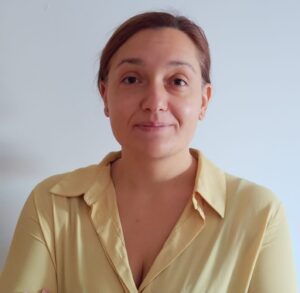
Dr. Laura Torino carried out her initial studies in particle physics at the University of Pisa. Her subsequent Ph.D. research at ALBA focused on longitudinal and transverse electron beam characterization using synchrotron radiation within the oPAC framework. Following her doctorate, she joined ESRF where she contributed to the development of the new beam loss monitor system and actively participated in the commissioning of the new EBS machine. Currently working at ALBA, she is responsible for the Beam Position Monitors and feedback systems, and is leading the development of the BPM system for the new ALBA II machine. Additionally, she collaborates on a new transverse profile monitor technique based on Non-Redundant Aperture interferometry, a method suitable for particle accelerators and also employed to analyze data from the James Webb Space Telescope.
